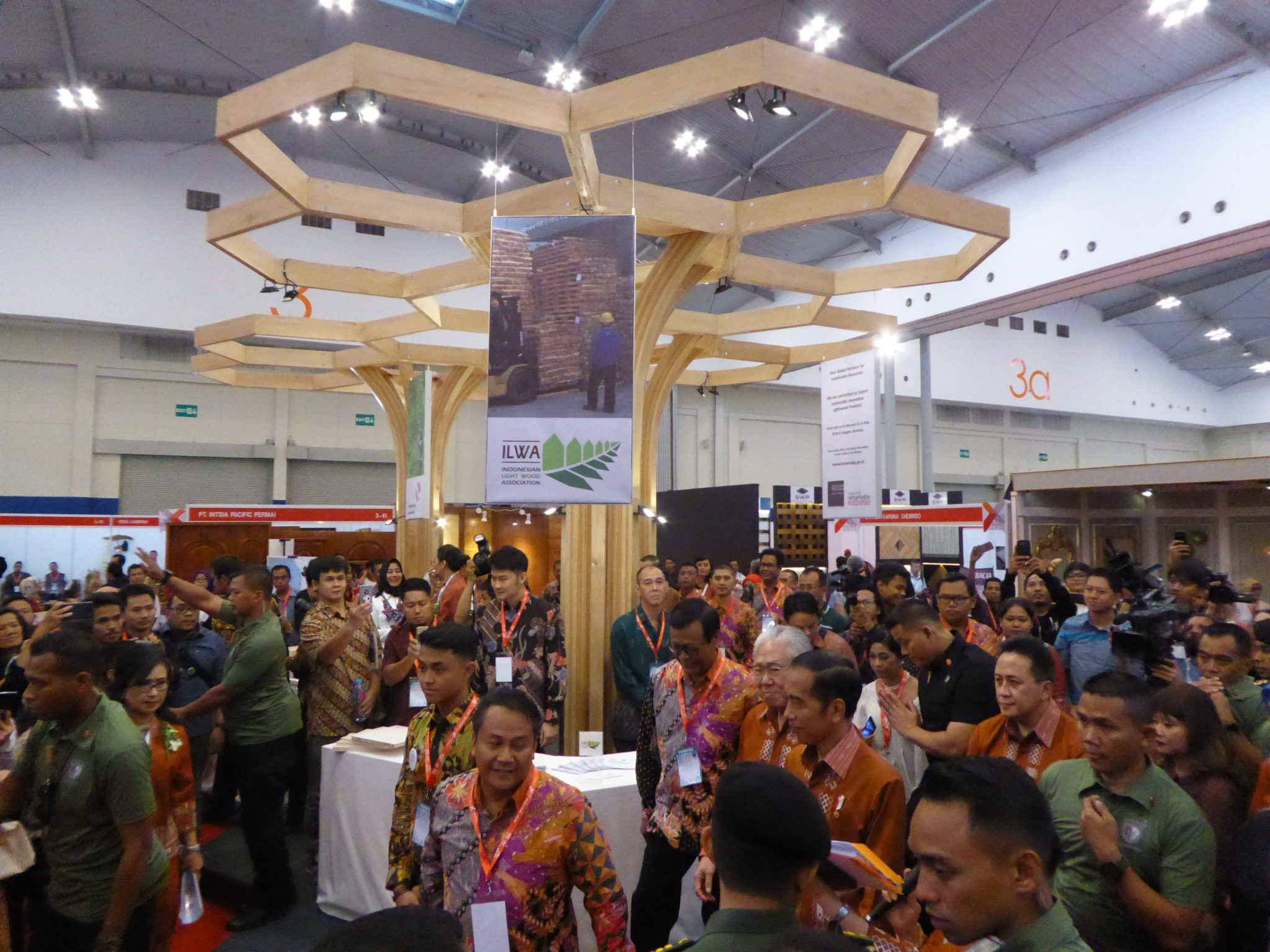Wood is regarded as an ecologically very sustainable material and usually has a negative CO2 balance, since it serves as a natural carbon pool. Especially in the construction sector, for example in comparison to aluminum, steel or lightweight concrete, which have relatively high CO2 emissions[1] per m3, wood can offer a sustainable alternative.
As part of a master thesis at the University of Ulm, a product made of Sengon wood was examined more closely. Sengon (Paraserianthes Falcataria) is considered a particularly soft light wood. Therefore, it is very sensitive to (tropical) weather and the durability is much higher when the raw material is further processed into wood products. Besides the use as biomass in the form of wood chips and pulp for paper production, Sengon is currently mainly processed into plywood in Indonesia (8.19%)[2].
Sengon plywood can be used in many ways. In Central Kalimantan, the construction of a wooden house made of Sengon plywood is currently being tested in a project supported by the German Federal Foundation for the Environment (Deutsche Bundesstiftung Umwelt (DBU). In order to be able to evaluate the ecological sustainability of the product, a life cycle assessment was carried out using 1m3 of Sengon plywood as the functional unit. The environmental impact of the processes from the seedling to the finished plywood panel was examined.
For the creation of a product’s LCA it is interesting to include as many process steps as possible where emissions can occur. For the case study, the reforestation process on Fairventures sites in Central Kalimantan, the transport of the raw material and the production of the plywood panels in Indonesia were considered.
In the context of climate change, the climate gas CO2 is being discussed strongly. CO2 can be bound in wood in the form of biogenic carbon and thus be removed from the atmosphere by reforestation. Wood products, for example the Sengon plywood, form a pool (a reservoir) for biogenic carbon during the lifetime of the product. Therefore, on the one hand it needs to be considered how many kg of CO2 are stored in one cubic meter of Sengon plywood and on the other hand how many kg of CO2 are released during the process steps from nursing the seedling to the finished product.
The result shows: on the one hand, there are about 641 kg of atmospheric CO2 stored in 1m3 Sengon plywood[3].
In addition, up to 463 kg biogenic carbon per m3 are fixed in the soil and in the intermediate plantations. On the other hand, fossil CO2 emissions of around 577 kg/m3 are generated during the production of plywood panels due to the necessary process steps: reforestation, transport and production. If, after a six-year rotation cycle, all the harvested Sengon wood were to be processed exclusively into veneer plywood, this would result in a remaining negative CO2 balance of around 3,550 t CO2 per ha and year.
In the case study, the reforestation process on the Fairventures sites accounts for a very small share of around 2% of the total emissions. From the analyzed processes, manufacturing is the biggest emission hotspot. Here, approximately 71% of CO2 emissions are generated, while the transport processes are responsible for approximately 28% of the total CO2 emissions.
Within the scope of the conducted life cycle assessment, the (global) export of the product is not yet included in this calculation. An average international export of around 3.680 km (for example an export to Thailand) would correspond to additional emissions of about half of the emissions from all previous process steps (both per m3). This negative impact of the transport could be significantly reduced, especially through local production and use of the product. Thus, a better ecological balance of the wood product can be achieved.
In the end, it can also be assumed that the pressure on the natural forests will be reduced through the newly created jobs and alternative income opportunities from Sengon cultivation, and that these forests will thus be preserved as a long-term carbon store.
________________
[1] Aluminium (> 25,000 kg CO2e/m3), steel (> 15,000 kg CO2e/m3), light concrete (> 500 kg CO2e/m3) (European Confederation of Woodworking Industries (2011))
[2] Indonesian sub-directorate of Forestry Statistics (2018)
[3] Calculated according to DIN EN 16449:2014-06



